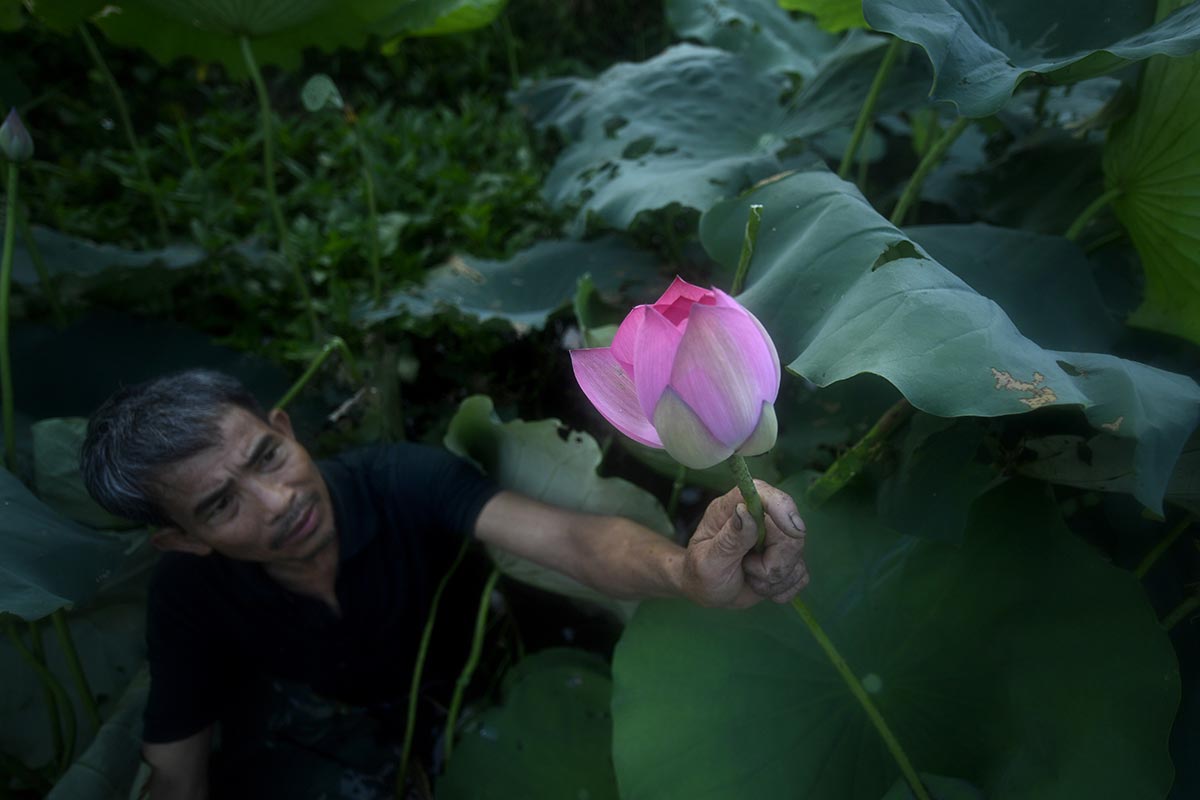The watery fields of vibrant green dotted with lotus pink provide a contrast to the paddy fields in the rural commune of My Hoa in southern Vietnam. For the communities surrounding the iconic lotus lakes, the flower is a gift that keeps on giving. The lotus plant provides seeds, pods, rhizomes and stems to be eaten or sold as food. The picturesque ponds attract tourists by the thousands, who often take boat rides, or indulge in the countryside dishes served at local restaurants.
However, the lotus fields of the Mekong Delta in Vietnam are shrinking, triggering concerns amongst local farmers and enthusiasts of loss to livelihoods and national tourism assets. According to the independent platform for current issues in the Mekong region, Mekong Commons, after a combo onslaught of climate change impacts such as declining water levels and salinity intrusion, as well as the unstable price for lotus seeds, many lotus farmers are having problems maintaining their lotus fields and are calling it quits.
The interlinkages between climate change and the tourism sector have been well documented. According to a joint publication by the United Nations Environmental Programme (UNEP) and the United Nations Educational, Scientific and Cultural Organization (UNESCO) titled ‘World Heritage and Tourism in a Changing Climate’, climate change is fast becoming the most significant risk for World Heritage sites worldwide. Climate change is also exacerbating the vulnerability of World Heritage sites to many existing risks.
The impacts of climate change can already be observed in the changes to the environment, acting as both, direct threats as well as threat multipliers to tourism assets. These include the melting of polar ice sheets and glaciers; thawing of the Arctic tundra; increases in extreme weather events like more severe storms, floods and droughts; accelerating rise in sea-levels and coastal erosion; desertification; more frequent and larger wildfires; and changes in species distribution and ecosystems.
Climate-related damage
All these changes are affecting World Heritage sites, both cultural and natural, in different ways. For natural heritage sites, adaptive capacity to the changes is reduced by other stresses including habitat loss, degradation and fragmentation. The speed of climate change and lack of habitat connectivity will severely limit ecosystem response in many cases, and will require the adoption of new and innovative management practices.
“Historic buildings and monuments at World Heritage sites are vulnerable to climate-related damage from extreme wind and rainfall events, as well as from coastal erosion, flooding and increasing damp and other impacts. Building foundations can be destabilized by increases or decreases in soil moisture, changes in the freeze/thaw cycle or, at Arctic sites, by thawing permafrost. Climate fluctuations inside buildings – the effect of higher temperatures and humidity – can cause mould, rot and insect infestations,” the report stated.

Source: UNEP and UNESCO.
There are three UNESCO World Heritage sites in Southeast Asia that are vulnerable to climate change. This include Vietnam’s Hoi An Ancient Town with its 1,100 wood-framed buildings. The exceptionally well-preserved Far Eastern trading port, much of which sits no more than two metres above sea level, is prone to flooding, which will worsen considerably with climate change and is also vulnerable to sea-level rise (SLR), storm surges during typhoons, and coastal erosion.
Another identified site is the Komodo National Park in Indonesia. The extremely biodiverse island is the only place on earth where the Komodo dragon - the largest living species of lizard with a population of less than 5,000 - can be found. The isolated population and very dry island are vulnerable to increased rainfall that could inundate breeding areas and change the vegetation, making the habitat less hospitable to these magnificent lizards. The island’s corals and mangrove forests are vulnerable to ocean acidification, warming, and SLR.
The Cordilleras rice terraces in the Philippines, were created and tended to by the indigenous Ifugao people over a period of at least 2,000 years. These terraces are highly sensitive to warming temperatures and extreme rainfall. More intense rainstorms make the steep mountain slope on which the rice is grown, less stable and prone to landslides and soil erosion. The local rice varieties developed over hundreds of years under stable climatic conditions are also less adaptable to climate change.
For these world heritage sites and national assets, the clock is ticking. Alongside efforts to reduce emissions and limit temperature rise, the international and national communities need to not only urgently develop and implement strategies to halt the damage, but also ensure funding is sufficient for less developed countries. Without these actions, we will lose these irreplaceable assets and our future generations will only be able to see them in old films.
Related articles:
